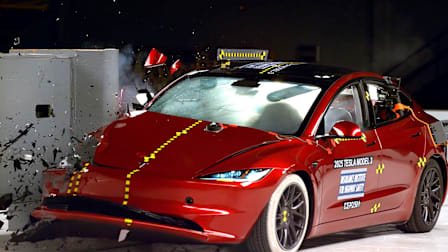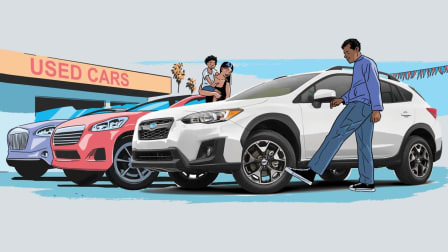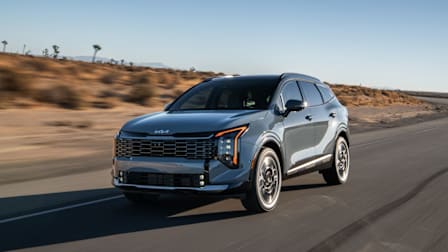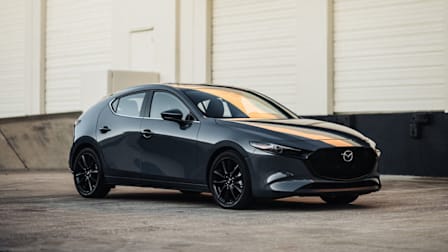SUV and Truck Buyers May Pay Thousands More for Life-Saving Feature, CR Study Shows
On pickups and SUVs made by Ford, GM, Stellantis, and Toyota, blind spot warning is often available only with pricey convenience packages

New research from Consumer Reports finds that it can cost over $1,000 extra to get the popular and potentially lifesaving blind spot warning (BSW) safety feature when buying one of today’s best-selling pickup trucks and SUVs.
As its name suggests, BSW can detect traffic in a vehicle’s side blind spots and alert a driver to its presence. A 2019 report from the Insurance Institute for Highway Safety (IIHS) and the Highway Loss Data Institute showed that the technology reduced lane-change crashes with injuries by 23 percent.
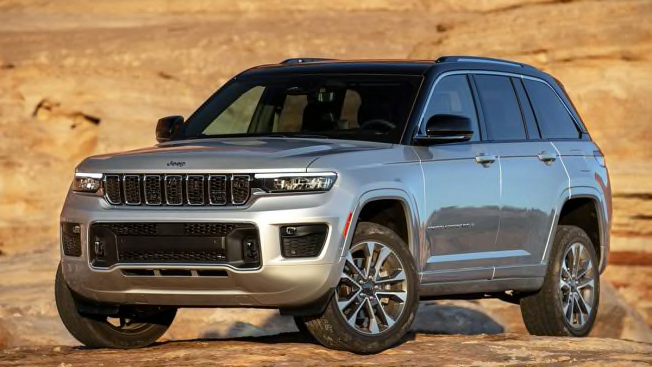
Photo: Jeep Photo: Jeep
Big, heavy vehicles also routinely do worse in CR’s emergency braking and handling tests, suggesting that it may be harder for their drivers to avoid a crash. As our evaluations demonstrate, these large vehicles tend to be less maneuverable and occupy more of a travel lane than traditional sedans, wagons, and smaller SUVs. Technology such as BSW can help drivers of large vehicles avoid collisions.
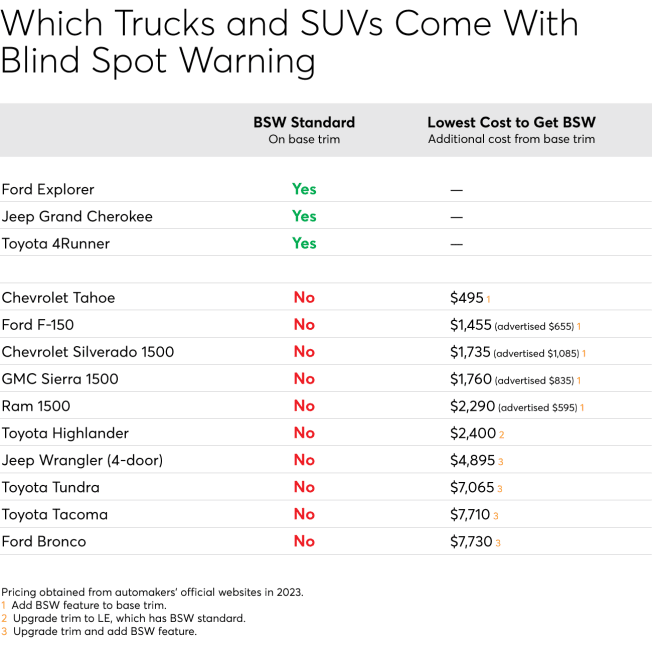
For this report, CR looked at the top-selling pickup trucks and midsized and large SUVs with curb weights over 4,000 pounds, based on 2022 data from Automotive News Research and Data Center. Pricing and availability were for 2023 models on sale in Connecticut, where CR’s Auto Test Center is located, primarily in February and March of 2023. We also looked at the Tesla Model Y, but it is not included on this chart because its version of the feature does not meet CR’s definition of BSW. Combined, these vehicles represent 26 percent of U.S. non-commercial vehicle sales in 2022.
Our analysis found that no full-size pickup truck—such as the Chevrolet Silverado 1500, GMC Sierra 1500, Ford F-150, Ram 1500, and Toyota Tundra—includes BSW as standard equipment. Although the Ford Explorer and Jeep Grand Cherokee SUVs provide standard BSW across all trim levels, Chevrolet Tahoe and Toyota Highlander SUV buyers have to pay extra.
CR recommends BSW as a safety feature, and gives bonus points in our ratings to vehicles that have it standard, along with rear cross traffic warning (RCTW), across all trim levels.
“CR has been calling for making BSW standard in all vehicles since October 2018, and our evaluations have found that it’s the feature drivers love the most, especially older drivers,” says Kelly Funkhouser, manager of vehicle technology at CR’s auto test center. “People tell us that once they’ve experienced BSW, they’ll never buy a car without it again.”
Beware BSW That’s ‘Bundled’ With Other Features
In general, BSW is somewhat more available on base trims than it was in the first half of 2019. But even if BSW is available as an option, buyers may only be able to get it by paying for other features they don’t want (a practice called “bundling,”) or by stepping up to a higher trim level altogether, which can add thousands to the purchase price of a new vehicle. Factor in interest rates if a vehicle is financed, and that cost increases further.
For example, if you’re shopping for a 2023 GMC Sierra 1500, the GMC.com website lists BSW as part of the $835 1SA Safety Plus Package. But once you select it, you’ll also have to add a $925 Convenience Package, which includes tinted windows and cruise control. And if you’re in the market for a Toyota Highlander, you can’t get BSW unless you step up from the base L to the higher LE trim level, which adds $2,400 to the price.
“Bundling safety features with convenience packages and luxury trims is an unfair practice that forces consumers to pay even more for a safety feature that should be standard,” says Friedberg. “All new vehicles and all trim levels should be equipped with safety features like blind spot warning technology at no extra cost, just like seat belts and airbags come standard.”
BSW isn’t considered a luxury feature in other classes of vehicles. For example, the Hyundai Elantra and Nissan Sentra—both compact sedans with starting prices below $21,000—come with BSW standard on all trim levels.
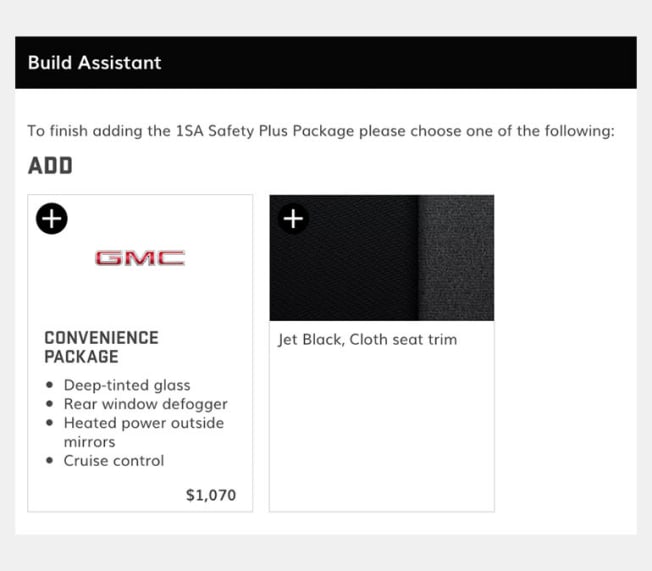
Source: GMC Source: GMC
When asked about BSW availability, automakers told CR that the feature is becoming more common across their vehicle lineups and that packaging depends on the specific vehicle.
“Many features are packaged differently from vehicle to vehicle and we are always working with our customers to provide the best value and technology for their vehicles,” says Sean Szymkowski, senior manager for Chevrolet Trucks communications.
BSW will be optional on the lowest SR trim level of the 2024 Tacoma but standard on all other trims when it goes on sale in December, says Corey Proffitt, senior manager for connected communications at Toyota North America. “[BSW] packaging remains a key priority in our vehicle lifecycle planning, and we will continue to be responsive to market conditions and supporting our customers,” he said.
Eric Mayne, a spokesperson for Stellantis (parent company of Jeep and Ram) said that the company does not discuss future product plans. “As with all vehicle features, we seek to reconcile availability with demand as we engage in continuous product improvement,” he told CR.
CR also reached out to Ford, but the company did not reply in time for publication.
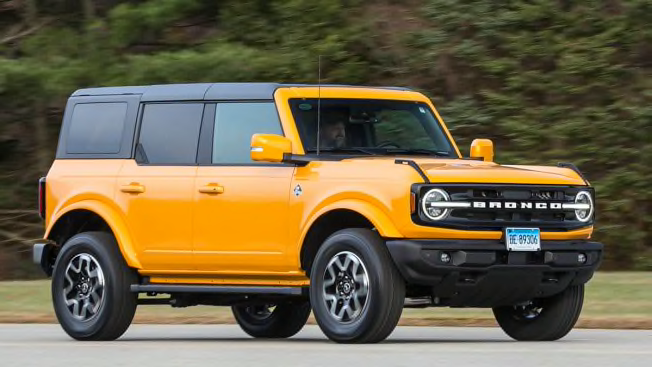
Photo: John Powers/Consumer Reports Photo: John Powers/Consumer Reports
How to Know if Your New Car Has Blind Spot Warning
The best way to know if the car you’re buying has BSW is to check the window sticker of the vehicle you’re purchasing. What makes matters even more confusing is that different manufacturers use a multitude of different names for BSW. For example, Chevrolet calls it both “Side Blind Zone Alert” and “Lane Change Alert,” Ford calls it “Blind Spot Information System” and abbreviates it as BLIS, and Ram calls it “Blind Spot Detection.” Even if the names are different, a manufacturer’s website usually helps explain what these features do. “If you’re shopping in person, you can check to see if the side-view mirror has a blind spot warning indicator,” Funkhouser says.
Looking for BSW when shopping for a vehicle online can be even more challenging. For instance, Ford lists Co-Pilot 360 Technology as standard equipment on the base Bronco trim. (Co-Pilot 360 is the automaker’s name for its suite of advanced safety and driver assistance systems.) In this case, one word—Technology—makes a big difference: The standard Co-Pilot 360 Technology feature does not include BSW on the Bronco, although the optional Co-Pilot 360 feature does—an important distinction that is difficult to find on the automaker’s website. To get BSW on a Bronco, buyers must step up to at least the Big Bend trim with an automatic transmission and then choose the Mid package, which adds $7,730 to the base price of a Bronco.
“This is information the average consumer wouldn’t be able to easily find, especially if they’re shopping for a new vehicle online,” says Shawn Sinclair, automotive safety engineer at CR’s auto test center. “Once you find BSW on the website, it takes multiple steps to add the feature, and the whole process is very cumbersome.”
Using similar terms for different features is confusing to consumers, says CR’s Funkhouser. “When it comes to safety features like BSW, automakers should use standard terminology online and on the window sticker to make it as easy as possible for consumers to know how a vehicle is equipped,” she says.
Costs to Consumers
Forcing consumers to pay extra for lifesaving features can be costly, both in terms of money and safety, says Friedberg. “The cost is clear when consumers do opt to pay extra. The safety cost—when people don’t get vital features because of the price—is less apparent, but it means lives lost, injuries suffered, and a myriad of expenses that consumers are forced to bear because of preventable crashes."
Making BSW standard on today’s new cars will also benefit tomorrow’s used car buyers, Friedberg says. “Ensuring availability on all new cars has the additional benefit down the line of giving future used car buyers confidence that they are buying models with proven safety features.”
Although some critics might argue that including more safety features as standard will raise prices for consumers, previous CR research shows this has not been the case. Examining real-world vehicle purchases made for CR’s testing program between 2003 and 2021, we found that improvements in fuel efficiency and safety did not lead to a statistically significant increase in inflation-adjusted prices. Often, making a feature standard on every version brings significant economies of scale. CR’s Funkhouser says that the sensors that enable BSW to work are also used for rear cross traffic warning (RCTW), meaning that car buyers also often get an additional safety feature when automakers add BSW.
“Proven safety features should be standard for all consumers, not just those who choose to pay extra, or who can do so,” says Friedberg.

















